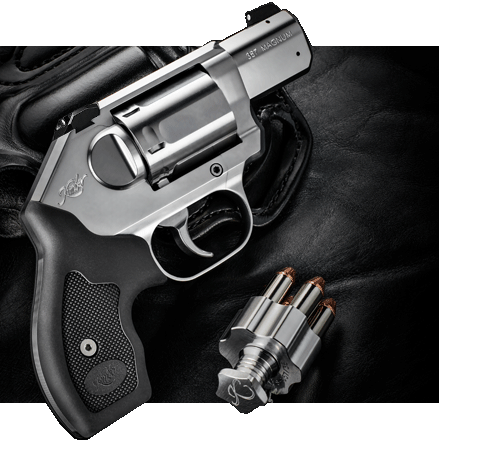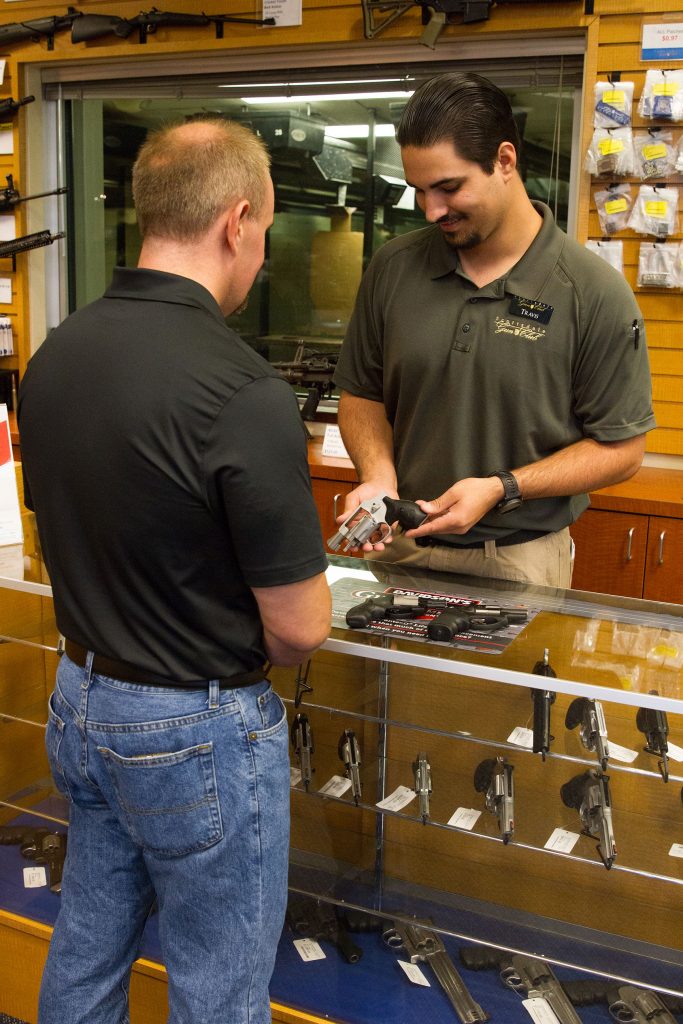In 2014, the last year for which production numbers are publicly available, Smith & Wesson produced nearly 1.2 million handguns and Ruger produced just over 1 million. Semi-auto production was much greater than revolver production, yet about 23 percent of all S&W handgun production and about 28 percent of Ruger's was revolvers. That's some 268,000 revolvers for Smith & Wesson and about 281,000 for Ruger. Yes, Ruger actually made more revolvers than Smith & Wesson that year.
Ken Jorgensen, Director of Media Relations and spokesman for Ruger said the company is on track to make more than 2 million guns in 2016, a significant increase over the previous year's production. And revolvers will be a part of that increase.
“Ruger has a great all around line. There's something for everyone,” said Jorgensen. He went on to say that the LCR is very popular and comes in .38 Special, 9mm and .327 Magnum. There are models with hammers and without, and various barrel lengths are manufactured. Ruger is especially proud of the LCR's smooth trigger pull, and all of these attributes make it a strong seller.
New Players in the Revolver Market
Some companies see the revolver market as strong enough to support entry. One company that has not previously made revolvers announced in late 2015 that it would offer a self-defense revolver chambered in .357 Magnum. Kimber's K6S revolver was a surprise to most since the company has become very well known for producing semi-automatic handguns, particularly 1911s.

Kimber's K6S revolver was designed for the customer who wants an all metal handgun with good ergonomics in a small size for discreet carry, and that offers a higher round count than many of the other small revolvers offered today.
Rachel Vandevoort, Trade Relations Manager for Kimber Mfg., Inc., related that Kimber had no statistics or market trend data to support the introduction of a revolver, but did so based on a belief that the revolver would be successful.
That’s a big bet on a feeling, but Kimber has been a successful company and has made a lot of correct decisions in the past. Vandevoort went on to say that the K6S was designed for the customer who wants an all metal handgun with good ergonomics in a small size for discreet carry, and that offers a higher round count than many of the other small revolvers offered today. And with six rounds in a cylinder that has flattened sides, it reduces the size of the cylinder to lessen printing through garments while at the same time carrying a larger payload than its J-frame competitors from Smith & Wesson.
Another company that has made the leap of faith. It is introducing a revolver line is Nighthawk Custom of Berryville, Arkansas, best known for its custom manufactured high-end 1911s. It has recently announced that it will be importing, modifying and selling Korth revolvers. Korth is a German firearms manufacturer that also has a reputation for producing very high quality, and not inexpensive, guns.
Travis Noteboom, Vice President of Sales and Marketing for Nighthawk, says that the decision to handle Korth revolvers was based on nothing more than a feeling that they would sell. Nighthawk knows that it will be addressing a niche market for high-end revolvers. However, it believes that the revolver market will always be around.
Accessory Sales as a Trend Indicator for Revolver Popularity
There is evidence from other manufacturers to support Kimber’s and Nighthawk’s bold move. Crimson Trace, for example, sells laser aiming devices for specific revolvers. So its sales numbers offer a way to track the strength of the revolver market.
Michael Faw, a Crimson Trace spokesman, reports that, “sales trends in all laser categories are up." And that includes revolvers. Faw goes on to say, "Our laser sights will fit on a wide assortment of Ruger, Smith & Wesson, Taurus and other revolvers, and we’ve announced we will soon be releasing a Lasergrip for the new Kimber revolver.” And Crimson Trace has enough faith in the revolver market that it now makes a grip without a light or laser for the Kimber.
Another company, Galco Gunleather, sells accessories for guns specific to make and model. Even though the handgun market has shifted demand in favor of semi-automatics, Galco reports that holsters for revolvers continue to sell well. Holsters designed for pocket or ankle carry, and belly-band rigs, seem to be the most popular, an indication that smaller, easy-to-carry revolvers are selling.
Galco spokesman Mike Barham says, “The most popular revolvers for concealed carry, unsurprisingly, are small-frame guns like the S&W J-frame, Ruger LCR and the various Taurus small frames. It’s a little tough to narrow it down to particular guns, simply because holsters for small-frame revolvers tend to fit multiple guns from a few different manufacturers.”
Nevertheless, Barham reports that Galco's Carry Lite line is a big seller and a surprising number of shoulder holsters are also sold. And to emphasize the popularity of revolvers for self-defense, he revealed that the company still gets requests for holsters to fit old Colt D-frames, which have been out of production for many years. However, Galco can accommodate those requests.
Gun Retailers Weigh in on Revolver Demand

A helpful and knowledgeable sales staff is key to helping customers find the right gun for self-defense. Often that gun is a revolver.
Clyde Helquist, owner of the Pistol Parlour in Mesa, Arizona, reports that most customers come into the store looking for help selecting a self-defense gun. They ask the customer to hold various guns. If he or she cannot manipulate the slide, a revolver is a good option.
Sales of semi-automatics are still much greater than sales of revolvers. Helquist estimates that revolver sales are about 5 percent of his handgun sales. However, the market for revolvers is large enough for him to carry a good assortment. He has about 15 to 20 compact revolver models in stock. Smith & Wesson models are the best sellers followed by the Rugers, especially the LCR. Helquist attributes the popularity of the LCR to a diverse offering of calibers including .22 Magnum and 9mm.
Carry revolvers sell well, and revolver sales are actually trending up at Scottsdale Gun Club according Purchasing Manager Paul Sherman. He reports that .38 Special is the most popular revolver cartridge with Smith & Wesson J-frame models being the biggest seller. The Ruger LCR is the second most popular. And revolvers remain in SGC's rental fleet, where they are shot frequently on the store’s indoor range.
Why are revolvers still popular? Sherman's comments mirror those offered by others interviewed for this story: the shooter/firearm interface is simple. Basically, just point the gun and pull the trigger. There are no safeties or slide catches to deal with. One does not have to worry about a magazine release or a separate magazine to manage ammunition.
It’s also easy to see at a glance if the gun is loaded, unlike a semi-automatic. If someone has little training, is not willing to get proper training and invest practice time on a regular basis, those customers usually gravitate toward the revolver.
When asked who buys revolvers, Sherman broke down the market into two categories. He estimates about 30 percent are experienced shooters who have a history with revolvers — these are often older shooters. They understand revolver virtues and limitations. The other 70 percent are new shooters looking for a gun. They want guns that are simple to operate. It's also possible they've had a difficult time operating the slide on a semi.
Although the revolver market may not be as large as the semi-automatic, handgun market, it continues to hold its own. Especially for those who value a firearm for its long history and ease-of-use.
"Are Revolvers Still Sellable" originally appeared in Tactical Retailer.






